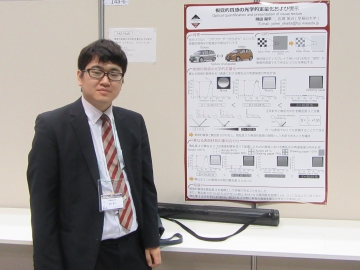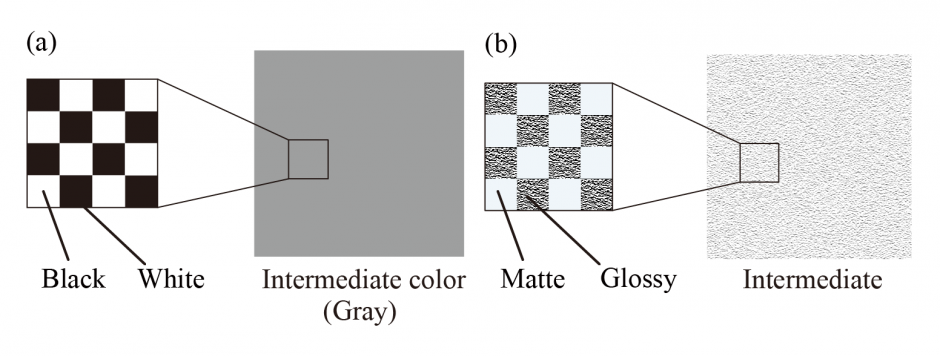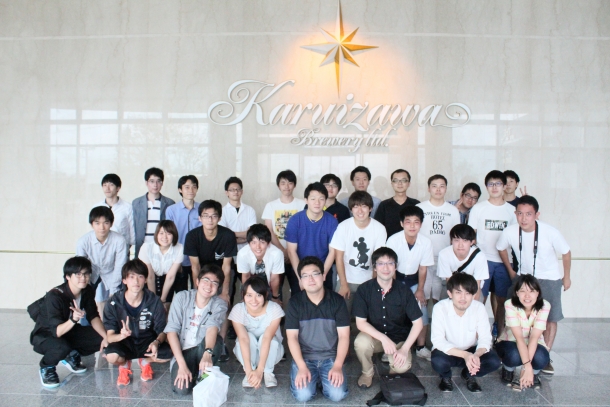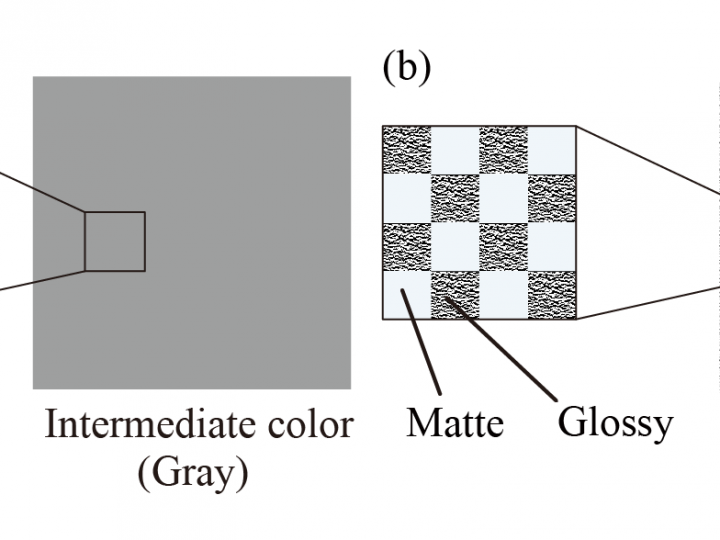Perceiving texture of objects on screen display with the naked eyes
Fri, Sep 22, 2017-
Tags
Visual perception of surface qualities and materials
Yohei Okada
Year 2 student from the Graduate School of Fundamental Science and Engineering

Okada at a research conference in 2016
I am a graduate student of the Department of Applied Mechanics and Aerospace Engineering in the Graduate School of Fundamental Science and Engineering. At Iwase Laboratory where I belong to, I do research on micro machines. These micro machines, usually between tens of nano-meters to hundreds of micrometers, can be as small and thin as a human hair. In fact, cellphones and smartphones that we use every day contain tons of micro machines.
At present, I am working on developing a program that can visually perceive textures or feels of objects using these micro machines. Imagine being able to tell if something is smooth or rough by just looking at it on a screen display. That is what I am currently working towards.
Televisions and LCD monitors can display a wide range of colors. However, these colors are in fact formed by mixing red, blue and green lights together. Building on this principle, I am aiming to develop a program that can perceive textures of objects on displays using micro actuators. If I succeed, there is a possibility in future that it can change our online shopping experience by more accurately portraying product images, preventing product mismatches.

If you look at the black and white boxes in (a) from far, you should be able to see the intermediate color (i.e. gray). Based on the same principle, you should be able to perceive the intermediate texture of matte and glossy textures in (b) from far.
As there is no preceding studies or research in this field, I faced a lot of challenges at the beginning. In addition to my major in applied mechanics, there was a need for me to study light theory and psychology. That was when I had to make constant trips to the libraries on Nishiwaseda campus. I also had to seek consultation with professors from other departments. I remember there were instances when I was so engrossed in my research when things failed to progress that I missed the last trains to return home. Although many unfortunate instances happened, I am happy to be able to find data that matches and supports the theories that I came up with.
Thus far, I have presented my research in three conferences (Robomec 2016, 21st Virtual Reality Society and Interaction 2017). By exchanging conversation and opinions with researchers from other universities in these conferences, it shed new light and gave me new ideas and inspiration, boosting my motivation. This year, I hope to give presentations about my research in international conferences and work towards winning some awards.

A camp organized every year by students belonging to the same seminar class where both students and professor can take a break from research and work (Okada is the second student from the right in the back row).














